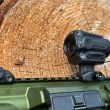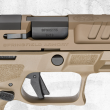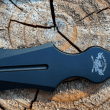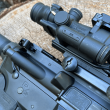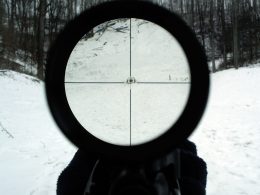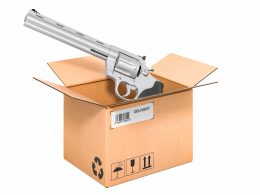A contentious subject
Barrel break in of a new rifle and cleaning techniques are contentious subjects with differing opinions and techniques between shooters and barrel makers.
Our collection of expert opinions
The following is a collection of thoughts about barrel break-in and cleaning from several shooters and Gale McMillan, who was the founder of McMillan, the well-respected firearms brand.
Do not follow the ‘recommended’ methods in the manufacturer’s instructions
Simply following the ‘recommended’ break-in methods shipped with every new barrel, generally does more harm than good. It’s probably more of a benefit to the barrel maker because around 10% of the barrel life is used up just for breaking it in. With this assumption, if a rifle has a life expectancy of 1000 rounds, the barrel maker gets to produce an additional barrel for every 10 barrels sold. That’s a money maker.
You really should consider what happens inside the barrel during break-in that supposedly offers extra benefit considering the time and expense of ammo used for doing this. There is no evidence to back this up.
However, cleaning the barrel is advantageous if done correctly because barrels will incur more damage through cleaning rods and abrasives than normal wear and tear.
BONUS OFFER: Get your free shooting range targets to print at home!
Get your free targets to print at home!
Gale McMillan’s view
Gale recommends cleaning with a brass brush pushed through the barrel at least 12 times, using a good solvent, followed by only 2 soft patches. So, benchrest shooters can clean every 7 – 8 rounds and high-power shooters can clean when they come off the line after 20 rounds. But, cleaning every shot for X amount and every 2 shots for X amount during the break-in procedure only aids in reducing the barrel’s life by the number of rounds shot.

Do not use an overly aggressive cleaning solvent
Using an aggressive cleaning solvents like J-B compound unevenly alters the barrel dimensions and removes the finish added to the barrel. This finish is effective in preventing metal fouling. So, unless the J-B compound is applied to a lead lap and used very sparingly, it can be useful but with regular use, it wears off the sharp edges in the rifling. This applies to both a factory barrel and a match barrel. Using something like Otters Foul is much easier on the barrel while still properly cleaning it.
Without care, you will shorten your barrel life
A new barrel has nice sharp areas of the corners of the rifling and after firing it a few thousand times, those corners are burned off. But if you want to do the break-in process by running an abrasive on a patch in and out the barrel, you’re taking the corners off the rifling. Instead of starting your shooting with sharp rifling, you’re starting with rifling as if it’s been through a few thousand rounds already and that’s shortening the barrel life for your shooting purposes.
When the compound reverses direction as it goes in and out the barrel, it’s enlarging the bore at each end of the barrel. Plus, a patch with an abrasive that runs through the barrel removes material so where there is copper fouling, it rides over it and cuts the same amount that it was cutting before it came to the copper.
Should you continue until the fouling is gone, you’ve put the same contour in the barrel steel that was in it when the metal fouling was there. Therefore, using a lead lap wouldn’t be as bad, and using Sweats or Otters Foul with a good bore cleaner till the fouling is gone, will do the job.
Use an aggressive abrasive? No more warranty.
To give a real-life example, Gale built a benchrest rifle for a customer and to test it, he shot the usual 5 groups of 5 shots and calculated the aggregate. Because that was deemed a good result, the rifle was shipped, and the new owner was happy with it.
However, 4 weeks later, the customer sent the rifle back saying it would no longer shoot. When the rifle was retested, it shot groups 3 times the size than the first test before it was sent to the customer.
After using a bore scope, the barrel looked like a mirror and the rifling was half round, not square. This was due to using an abrasive. Subsequently, McMillan shipped new rifles with a note stating the warranty would be voided if any abrasives were used.
We recommend a brass brush
Brass brushes are softer than barrel steel and does no harm, but stainless-steel brushes must be avoided at all costs because they are harder than barrel steel. Nylon is also very abrasive; simply look at a fishing rod’s carbide eye to see how the nylon line wears groves into it.
The effects of rounded rifling on your accuracy
Regarding the effects of rounded rifling on accuracy, the rifling adds an angular velocity to a bullet so using abrasives near the muzzle will create imperfections in the bore’s roundness, which will affect the bullet as it leaves the muzzle.
It’s near impossible to evenly clean the inside diameter of the muzzle, so any imperfections will affect accuracy. Using any improper or harsh cleaning methods can cause these imperfections.
Barrel break in: final thoughts
There will always be ongoing discussions about barrel break-ins, and cleaning and maintenance techniques to properly look after a barrel during its lifespan. Some shooters may prefer aggressive brushing, while others stick to less intrusive approaches. Different fouling problems require different solutions. For lined barrels, firing around 200 rounds before the first clean allows leaving a bit of residue in the barrel that helps polish barrel’s internal finish.
Most rifles will shoot well unless it’s neglected or mistreated and having to break-in a barrel is just a myth and the results you get from breaking a barrel in are insignificant. While nobody said never clean a new rifle, having to break it in is not necessary. No scientific explanation can reinforce the argument for breaking in a barrel as it does not physically alter the barrel’s properties or give any noticeable improvement in shooting accuracy or ability.

